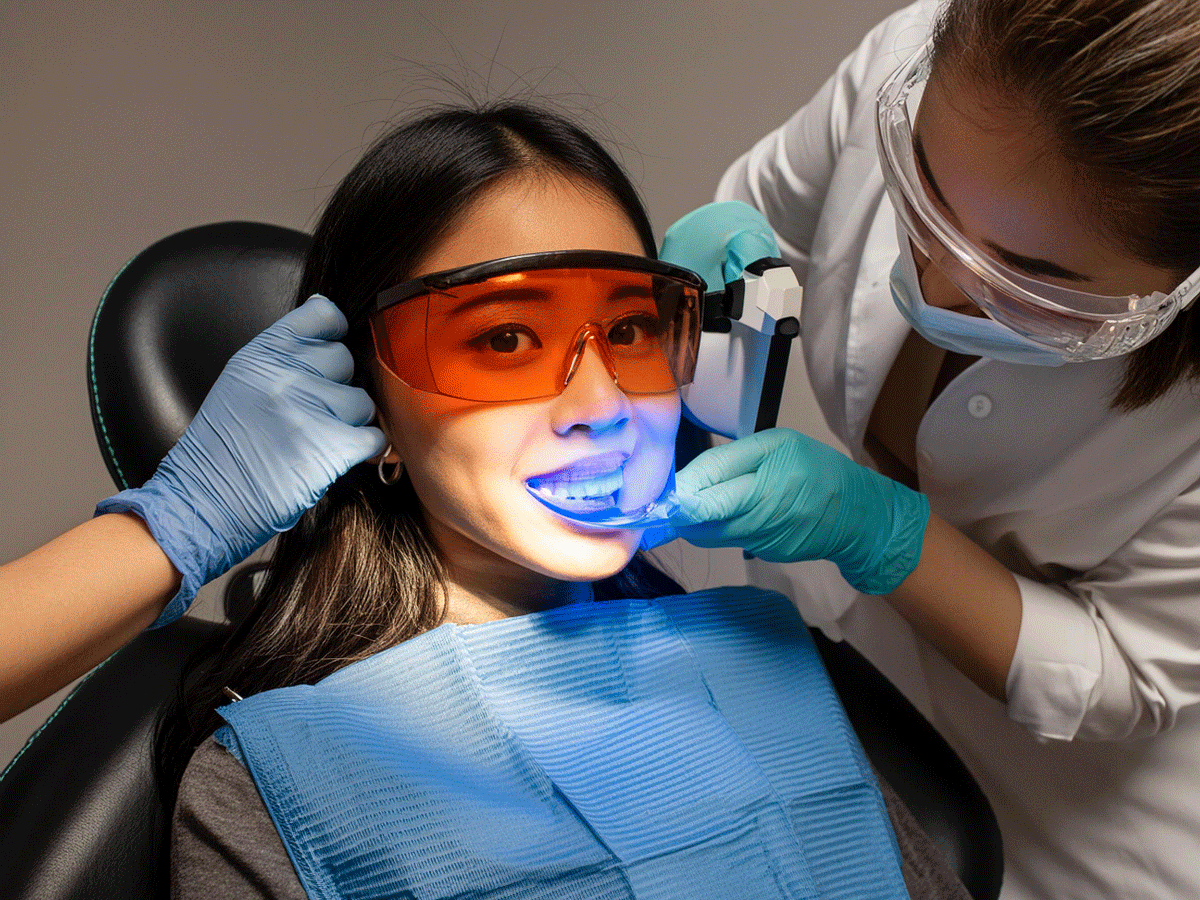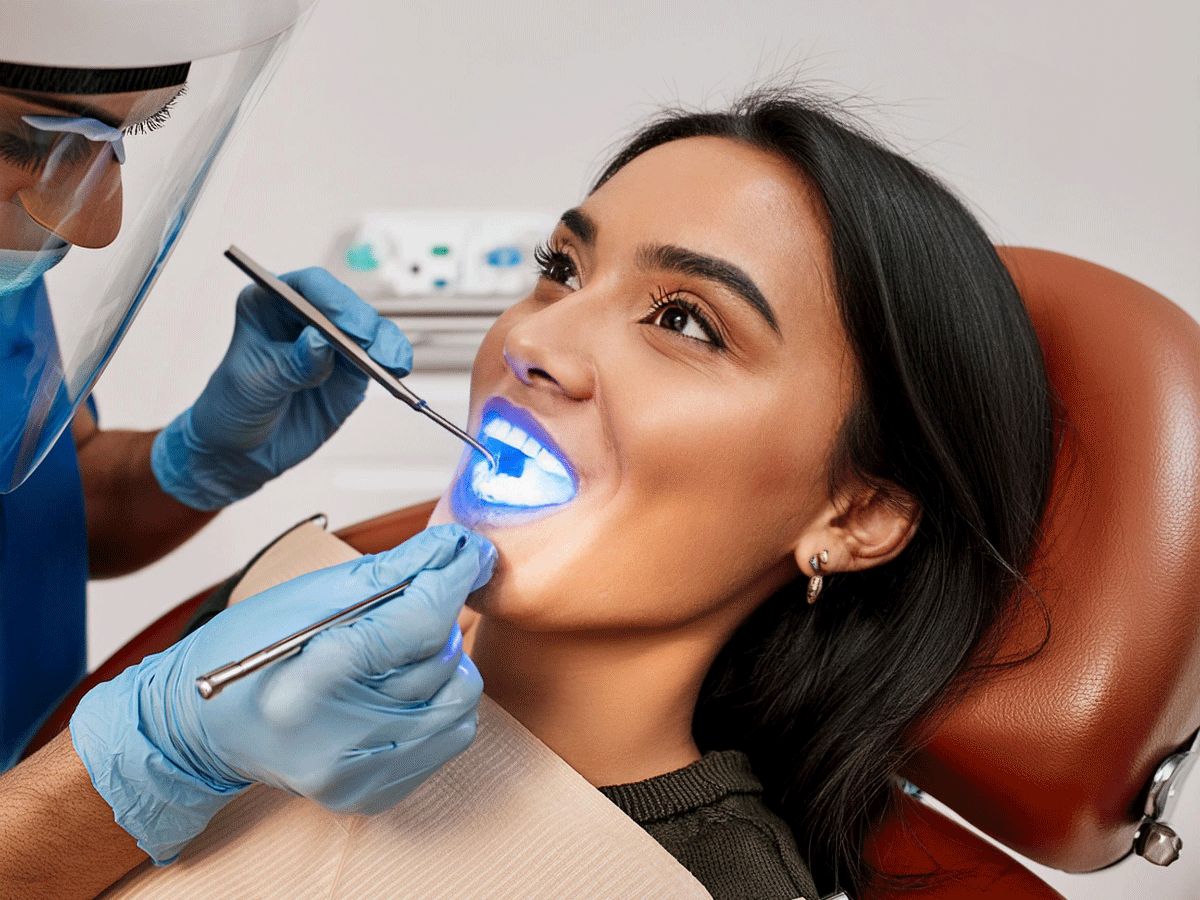When it comes to making a great first impression, a bright, white smile can make all the difference. Teeth whitening has become a popular cosmetic dental procedure, especially among Manhattan residents looking to enhance their appearance. But what determines the color of our teeth, including the health of our tooth enamel, and how can we achieve that coveted pearly white smile? This article explores the factors that influence tooth color and discusses various teeth whitening methods, including the use of hydrogen peroxide. Understanding these factors can help you make informed decisions about your dental care and choose the most effective whitening treatments. Whether you’re considering professional whitening services or over-the-counter products, knowing what affects your tooth color is the first step towards a radiant smile.
Intrinsic stains occur when the inner structure of the tooth, known as the dentin, becomes discolored. Unlike extrinsic stains, which affect the outer layer of the tooth (enamel), intrinsic stains can result from trauma, certain medications, or excessive fluoride intake during tooth development. These types of stains are usually more challenging to remove and may require specialized teeth whitening treatments performed by dental professionals to achieve significant results. Additionally, maintaining good oral hygiene and regular dental check-ups can help prevent the formation of new stains and keep your smile looking its best. Lifestyle choices, such as avoiding tobacco and limiting the intake of staining foods and beverages, also play a crucial role in preserving the natural whiteness of your teeth. By combining professional treatments with consistent at-home care, you can achieve and maintain a bright, healthy smile.

The Anatomy of a Tooth
To understand what affects the color of our teeth and the importance of teeth whitening, it’s essential to know a bit about tooth anatomy. Each tooth is composed of several layers:
- Enamel: The outermost layer, which is hard and translucent.
- Dentin: The layer beneath the enamel, which is yellowish and less dense.
- Pulp: The innermost part of the tooth, containing nerves and blood vessels.The color of our teeth is primarily determined by the thickness and quality of the enamel and the color of the dentin underneath. Thicker tooth enamel tends to appear whiter, while thinner enamel allows more of the yellowish dentin to show through. Additionally, factors such as age, diet, and oral hygiene practices can influence the color of our teeth. For instance, consuming staining substances like coffee, tea, and red wine can darken the enamel over time. Smoking and the use of tobacco products can also lead to significant discoloration, making teeth appear yellow or brown.Regular dental care and professional teeth whitening treatments, including those that use hydrogen peroxide or bleach, can help maintain a brighter smile. At-home whitening products, such as whitening strips and gels, can also be effective, though they may take longer to show results. It’s important to follow a consistent oral hygiene routine, including brushing twice a day, flossing, and using mouthwash, to prevent new stains from forming. Consulting with a dental professional can provide personalized advice and help you choose the most effective whitening method for your needs. By combining professional treatments with diligent at-home care, you can achieve and maintain a radiant, healthy smile.
Factors Affecting Tooth Color
Several factors can influence the color of our teeth, including:
Genetics
Genetics play a significant role in determining the natural color of our teeth. Some people are born with thicker tooth enamel, which can make their teeth appear whiter. Others may have naturally thinner enamel, resulting in a more yellowish hue. Additionally, the underlying dentin, which is naturally yellow, can show through more prominently in those with thinner enamel. Environmental factors, such as diet and oral hygiene habits, also influence tooth color. For instance, consuming staining foods and beverages like coffee, tea, and red wine can lead to discoloration over time.
Depending on the cause and severity of intrinsic stains, different approaches, including teeth whitening or bleaching, may be taken to address them. Professional whitening treatments, such as in-office bleaching and custom-fitted whitening trays, can sometimes improve the appearance of intrinsically stained teeth through effective bleaching techniques. However, in cases where whitening treatments are not sufficiently effective, procedures like dental bonding, veneers, or crowns might be recommended to restore the tooth’s appearance.
Age
As we age, our enamel naturally wears down, revealing more of the dentin underneath. This can cause our teeth to appear more yellow or darker over time. Additionally, the cumulative effects of staining from food, drinks, and other substances can contribute to discoloration. Smoking and tobacco use are also significant factors that can lead to yellowing and staining of the teeth. Poor oral hygiene practices, such as infrequent brushing and flossing, can exacerbate these effects, leading to more pronounced discoloration. Regular dental check-ups, professional cleanings, and teeth whitening treatments can help manage and mitigate these changes, maintaining a brighter smile.
Diet and Lifestyle
Certain foods and beverages are notorious for staining teeth, which can necessitate teeth bleaching. Common culprits include:
- Coffee
- Tea
- Red wine
- Berries
- Tomato sauce
Smoking and tobacco use can also cause significant staining, leading to yellow or brown discoloration, making teeth whitening a potential solution. Additionally, acidic foods and drinks can erode tooth enamel, making teeth more susceptible to staining. Regular consumption of these items can gradually alter the natural color of your teeth, making them appear dull and less vibrant. To combat these effects, it is important to maintain a consistent oral hygiene routine, including brushing twice a day, flossing, and using mouthwash. Professional dental cleanings and teeth whitening treatments can further help in restoring and maintaining the natural brightness of your smile. Consulting with a dental professional can provide you with tailored advice and effective solutions to address any discoloration concerns.
Oral Hygiene
Poor oral hygiene can contribute to tooth discoloration, often leading individuals to seek teeth whitening solutions. Plaque and tartar buildup can cause teeth to appear yellow or brown. Regular brushing, flossing, and professional cleanings are essential for maintaining a bright smile. Additionally, avoiding foods and beverages that stain teeth, such as coffee, tea, and red wine, can help preserve their natural color. Smoking is another major factor that can lead to significant discoloration. By adhering to a consistent oral care routine and making mindful lifestyle choices, you can keep your teeth looking their best. Furthermore, using a whitening toothpaste and considering professional teeth whitening treatments can enhance the appearance of your smile. Consulting with a dental professional can provide personalized advice and effective solutions tailored to your specific needs.
Medications
Some medications can cause tooth discoloration as a side effect. For example, certain antibiotics, such as tetracycline and doxycycline, can cause teeth to become discolored, especially in children whose teeth are still developing. Additionally, some antihistamines, antipsychotic drugs, and high blood pressure medications can also lead to tooth discoloration, which might be addressed through teeth whitening procedures. This discoloration can range from mild yellowing to more severe brown or gray hues, depending on the medication and duration of use. It’s important to consult with your dentist if you notice any changes in the color of your teeth while taking these medications. They can provide guidance on the best teeth whitening options to restore your smile.

Teeth Whitening Methods
Fortunately, there are several teeth whitening methods available to help you achieve a brighter smile. These methods can be broadly categorized into professional treatments and at-home solutions. Professional treatments, often performed by a dentist, include in-office bleaching and laser whitening, which provide quick and effective results by utilizing hydrogen peroxide. These treatments are typically more potent and can deliver noticeable results in just one session. On the other hand, at-home solutions such as whitening strips, gels, and toothpaste offer a more convenient and affordable option, though they may take longer to show noticeable results. By understanding the differences between these methods, you can choose the one that best suits your needs and lifestyle.
When considering at-home teeth whitening options, products containing carbamide peroxide are often recommended for their effectiveness and ease of use. These products generally come in the form of gels that are applied to the teeth using trays or strips. Carbamide peroxide not only whitens teeth but also has a longer shelf life compared to hydrogen peroxide, making it a popular choice among over-the-counter whitening solutions. Additionally, some at-home kits come with LED lights designed to accelerate the whitening process, offering a more advanced approach to achieving a brighter smile. It’s important to follow the instructions carefully to avoid overuse, which can lead to tooth sensitivity or gum irritation. Consulting with a dental professional before starting any whitening regimen can provide valuable insights and ensure that you choose the safest and most effective method for your specific needs. By taking these steps, you can confidently work towards a whiter, more radiant smile.
Professional Teeth Whitening
Professional Teeth Whitening treatments are performed by dental professionals and typically offer the most effective and long-lasting results, often utilizing advanced bleaching techniques. These treatments are tailored to meet individual needs, ensuring optimal outcomes. Some common professional whitening methods include:
- In-Office Whitening: This procedure involves applying a high-concentration bleaching agent to the teeth, which is then activated by a special light or laser. The entire process usually takes about an hour, and patients can see immediate results. This method is ideal for those seeking quick and noticeable improvements.
- Custom-Fit Whitening Trays: Your dentist can create custom-fit trays for your teeth and provide you with a professional-grade whitening gel. You will wear the trays for a specified amount of time each day, usually for a few weeks, until you achieve the desired results. This method allows for gradual whitening and can be done in the comfort of your own home.
Both methods are supervised by dental professionals, ensuring safety and effectiveness.
When considering different methods for teeth whitening, one might look into professional alternatives like in-office treatments or take-home trays provided by a dentist. In-office treatments use a high-concentration bleaching agent, often accelerated by a light or laser, to deliver swift and noticeable results through effective bleaching. For those who prefer a more gradual approach, take-home trays filled with professional-grade gel can be worn daily over a few weeks. Both options, supervised by dental professionals, ensure safety and efficacy in achieving a brighter smile.
At-Home Teeth Whitening
There are also several at-home teeth whitening options available, which can be more convenient and cost-effective. Some popular at-home methods include:
- Whitening Toothpaste: These toothpastes contain mild abrasives and chemical agents that help remove surface stains. While they can help maintain a bright smile, they are generally less effective at removing deeper stains.
- Whitening Strips: These thin, flexible strips are coated with a peroxide-based whitening gel and are applied directly to the teeth. They are typically worn for 30 minutes to an hour each day for a couple of weeks and contain hydrogen peroxide as the active whitening agent.
- Whitening Pens: These pens contain a whitening gel that can be applied directly to the teeth. They are convenient for touch-ups and on-the-go whitening.
- Over-the-Counter Whitening Trays: Similar to custom-fit trays, these trays are pre-filled with a whitening gel and can be worn at home. However, they may not fit as snugly as custom trays, which can affect the overall effectiveness.
Maintaining Your Whiter Smile
Once you’ve achieved your desired level of whiteness, it’s essential to maintain your results with regular bleaching touch-ups as recommended by your dentist. Here are some teeth whitening tips for keeping your smile bright:
- Practice Good Oral Hygiene: Brush your teeth at least twice a day, floss daily, and visit your dentist regularly for cleanings and check-ups. Using a whitening toothpaste can also help maintain your results.
- Limit Staining Foods and Beverages: Try to reduce your consumption of coffee, tea, red wine, and other staining substances. When you do indulge, rinse your mouth with water afterward to help minimize staining. Additionally, consider incorporating more water and dairy products into your diet, as they can help neutralize acids and protect your enamel.
- Quit Smoking: If you smoke or use tobacco products, consider quitting to prevent further staining and improve your overall oral health. Smoking not only stains your teeth but also increases the risk of gum disease and oral cancer.
- Use a Straw: When drinking beverages that can stain your teeth, use a straw to minimize contact with your teeth. This simple habit can significantly reduce the risk of discoloration over time.
- Touch-Up Treatments: Depending on the whitening method you used, you may need periodic touch-up treatments to maintain your results. Consult your dentist for recommendations on the best products and frequency of use to keep your smile looking its best.
Conclusion
Teeth Whitening has become an increasingly popular Cosmetic Dental procedure, especially among Manhattan residents seeking to enhance their smiles. The color of teeth can depend on various factors, including genetics, age, diet, and oral hygiene habits. For instance, consuming beverages like coffee, tea, and red wine can stain teeth over time. Additionally, smoking and certain medications can also contribute to discoloration. Regular dental check-ups and professional cleanings can help maintain the natural whiteness of teeth. Understanding these factors can assist individuals in making informed decisions about teeth whitening treatments and maintaining a bright, healthy smile.
Moreover, advancements in dental technology have made teeth whitening more accessible and effective than ever before. There are various options available, from over-the-counter whitening products to professional treatments offered by dental clinics. Each method has its own set of benefits and potential drawbacks, making it crucial to choose the right one based on individual needs and circumstances. Consulting with a Dental Professional is essential to determine the most effective and safe whitening options tailored to individual needs. They can provide personalized recommendations and ensure that the chosen treatment is both effective and safe, minimizing the risk of sensitivity or other side effects. By taking these steps, individuals can achieve a brighter, more confident smile that enhances their overall appearance and well-being.

